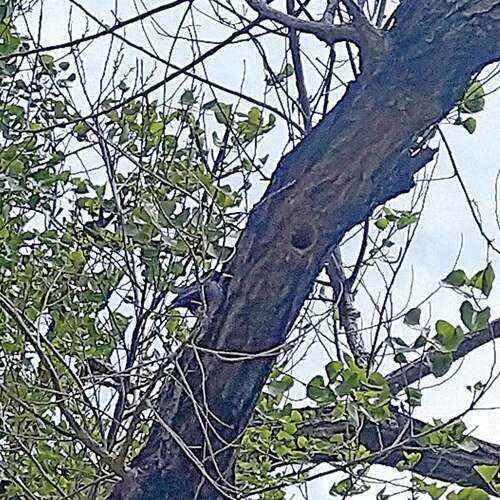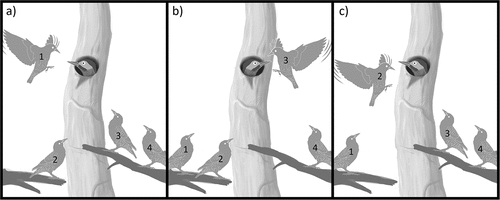Figures & data
Table 1. Nest monitoring of a breeding pair of Green-barred Woodpecker (Colaptes melanochloros) in an urban area of La Plata, Argentina, during the 2021–2022 breeding season. Dates of the beginning of nest construction and egg laying are indicated and the type of interaction with the European Starling (Sturnus vulgaris) is detailed.
Table 2. Features of the nest tree-support of a breeding pair of Green-barred Woodpecker (Colaptes melanochloros) in a urban area of La Plata, Argentina, during the 2021–2022 breeding season.


